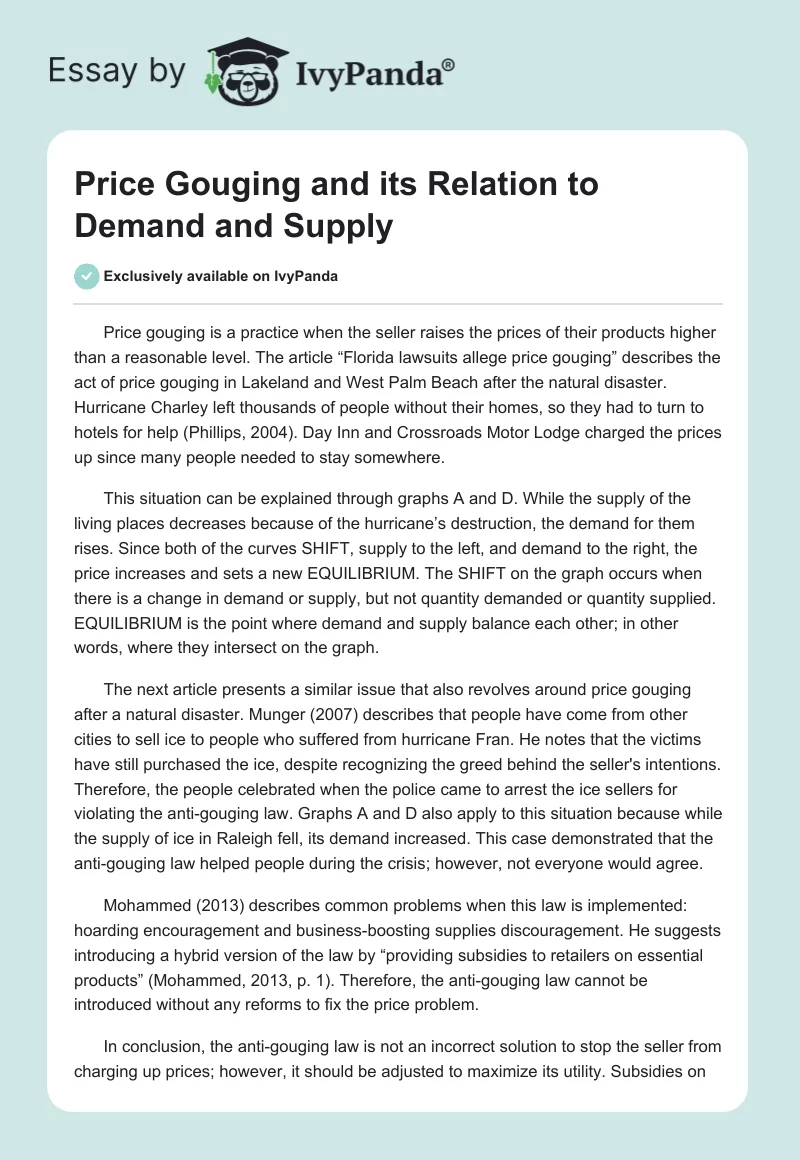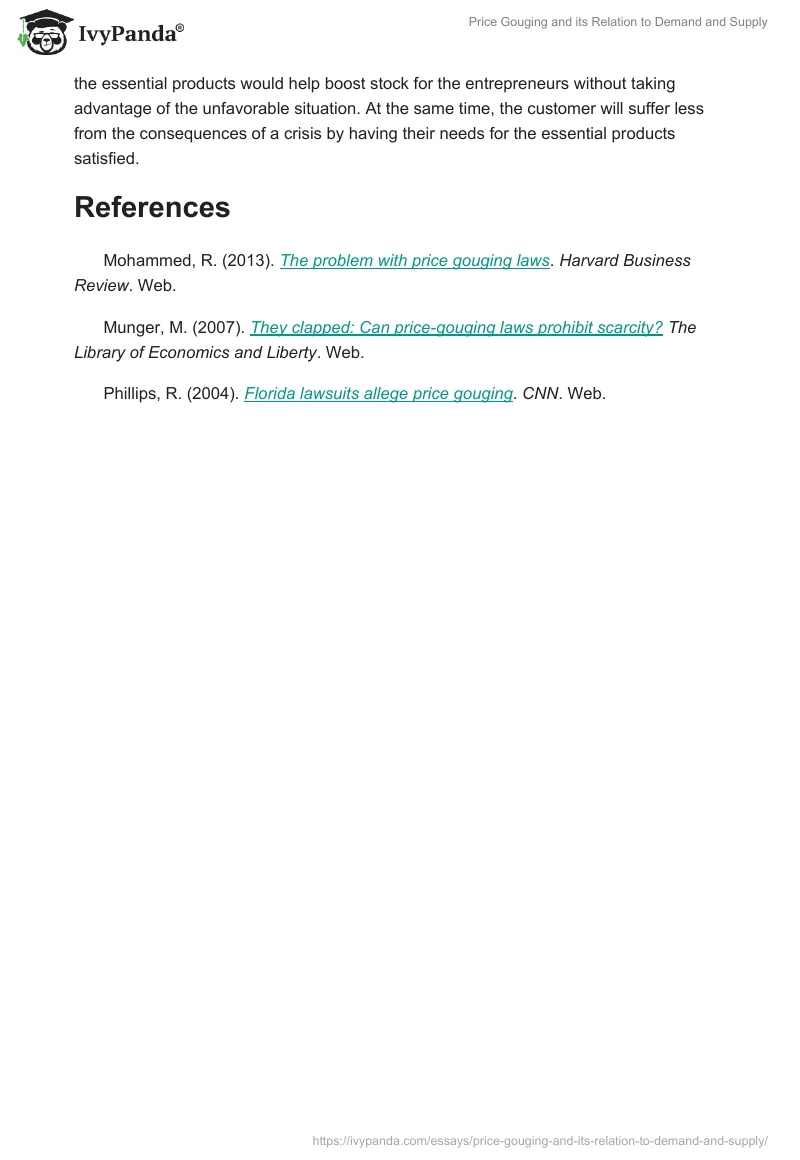Price gouging is a practice when the seller raises the prices of their products higher than a reasonable level. The article “Florida lawsuits allege price gouging” describes the act of price gouging in Lakeland and West Palm Beach after the natural disaster. Hurricane Charley left thousands of people without their homes, so they had to turn to hotels for help (Phillips, 2004). Day Inn and Crossroads Motor Lodge charged the prices up since many people needed to stay somewhere.
This situation can be explained through graphs A and D. While the supply of the living places decreases because of the hurricane’s destruction, the demand for them rises. Since both of the curves SHIFT, supply to the left, and demand to the right, the price increases and sets a new EQUILIBRIUM. The SHIFT on the graph occurs when there is a change in demand or supply, but not quantity demanded or quantity supplied. EQUILIBRIUM is the point where demand and supply balance each other; in other words, where they intersect on the graph.
The next article presents a similar issue that also revolves around price gouging after a natural disaster. Munger (2007) describes that people have come from other cities to sell ice to people who suffered from hurricane Fran. He notes that the victims have still purchased the ice, despite recognizing the greed behind the seller’s intentions. Therefore, the people celebrated when the police came to arrest the ice sellers for violating the anti-gouging law. Graphs A and D also apply to this situation because while the supply of ice in Raleigh fell, its demand increased. This case demonstrated that the anti-gouging law helped people during the crisis; however, not everyone would agree.
Mohammed (2013) describes common problems when this law is implemented: hoarding encouragement and business-boosting supplies discouragement. He suggests introducing a hybrid version of the law by “providing subsidies to retailers on essential products” (Mohammed, 2013, p. 1). Therefore, the anti-gouging law cannot be introduced without any reforms to fix the price problem.
In conclusion, the anti-gouging law is not an incorrect solution to stop the seller from charging up prices; however, it should be adjusted to maximize its utility. Subsidies on the essential products would help boost stock for the entrepreneurs without taking advantage of the unfavorable situation. At the same time, the customer will suffer less from the consequences of a crisis by having their needs for the essential products satisfied.
References
Mohammed, R. (2013). The problem with price gouging laws. Harvard Business Review. Web.
Munger, M. (2007). They clapped: Can price-gouging laws prohibit scarcity?The Library of Economics and Liberty. Web.
Phillips, R. (2004). Florida lawsuits allege price gouging. CNN. Web.


